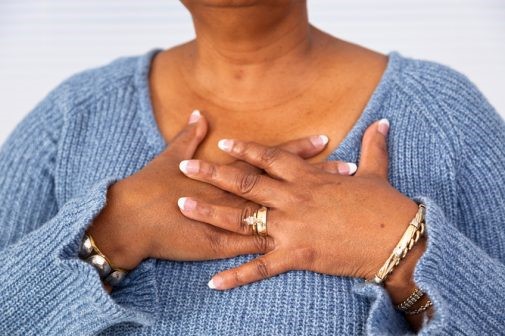Heart Attack Symptoms for Women and Men
 Heart disease is the leading killer of both men and women in the U.S. Heart attack is one possible result of heart disease. If you have a heart attack, the good news is that you have a greater chance of survival and limiting damage to your heart if you quickly identify the symptoms and call 9-1-1 immediately.
Heart disease is the leading killer of both men and women in the U.S. Heart attack is one possible result of heart disease. If you have a heart attack, the good news is that you have a greater chance of survival and limiting damage to your heart if you quickly identify the symptoms and call 9-1-1 immediately.
Despite what many of us are led to believe by movies and TV shows, a heart attack doesn’t always cause dramatic chest pain. In fact, most heart attacks start slowly, with mild pain or discomfort, according to the American Heart Association (AHA). That’s why it’s important to understand heart attack symptoms and be prepared to take action fast. Never wait more than five minutes to call 9-1-1 in an emergency situation. Don’t drive yourself – have someone take you to the emergency room.
Understanding heart attacks
Heart attacks often result from coronary heart disease, a condition where plaque builds up in the arteries that supply blood to the heart. Plaque buildup can create a tiny clot that cuts off blood flow to the heart.
The heart needs a continuous supply of blood and oxygen to function properly. Coronary arteries, which surround the heart, are responsible for bringing blood to the heart.
When one or more coronary arteries become blocked, preventing blood and oxygen from reaching part of the heart, a heart attack occurs. If blood flow isn’t restored quickly, the part of the heart that’s not getting blood can become damaged.
Heart attack symptoms
Not everyone experiences the same symptoms of a heart attack. Some people have severe signs, while others have milder ones. And some people don’t have any at all.
According to the AHA, here are signs that can mean a heart attack is happening:
- Chest discomfort: Most heart attacks involve discomfort in the center of the chest that lasts more than a few minutes or that goes away and comes back. It can feel like uncomfortable pressure, squeezing, fullness or pain.
- Discomfort in other areas of the upper body: This can include pain or discomfort in one or both arms, the back, neck, jaw or stomach.
- Shortness of breath with or without chest discomfort.
- Other signs may include breaking out in a cold sweat, nausea or lightheadedness.
The AHA says that like men, women’s most common heart attack symptom is chest pain or discomfort. But women are somewhat more likely than men to experience some of the other common symptoms, particularly shortness of breath, nausea/vomiting and back or jaw pain.
A message for women
If you’re a woman, or if you have women in your life, make sure you understand the symptoms of a heart attack and get help fast in an emergency. Here’s why:
- Many women don’t realize they’re far more likely to die from heart disease or stroke than breast or lung cancer.
- Women are “somewhat more likely than men” to have other symptoms, like shortness of breath, jaw pain or nausea, according to the AHA.
- Women are more likely to delay getting treatment, and doctors may be slower to recognize heart attacks in women, the AHA says.
Article contributed by: Dr. Muhammad Jan
Tags: #aha, #americanheartassociation, #health, #heartattack, #olwparish, #parishnurse

Comments are closed here.